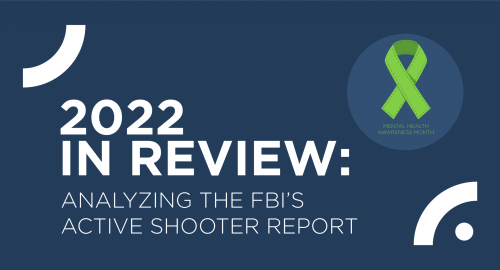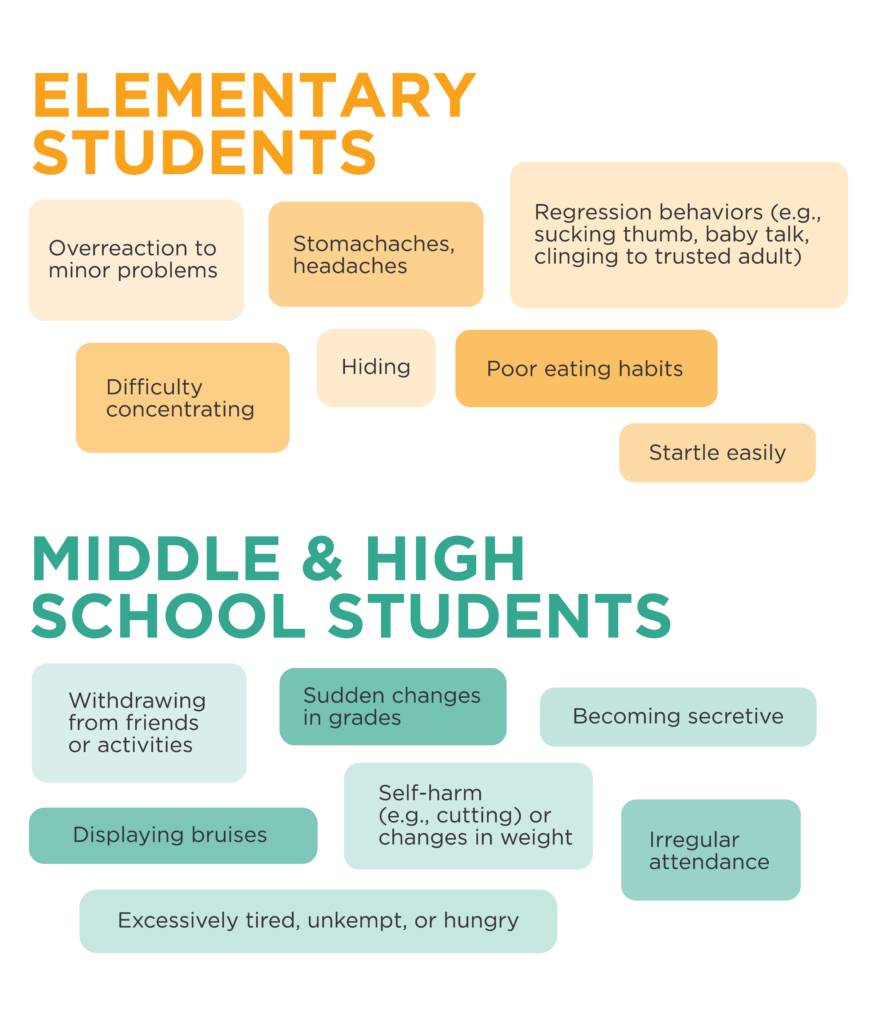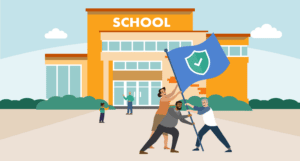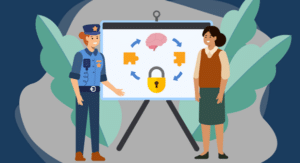Listen to this blog
4 minutes
On April 26th, the FBI released their 2022 report on active shooter incidents in the US. By providing an overview of active shooter incidents, the goal of these reports is to help law enforcement, other first responders, and the public better understand the levels of threats associated with active shooter incidents.
While the overview data addresses all active shooter events—defined as one or more individuals actively engaged in killing or attempting to kill people in a populated area—and not those at schools alone, analyzing the data from all scenarios provides insight into the broader safety issues, preventative measures, and best practices for emergency responses that apply to all public areas, schools included.
The report does include breakout sections with more specific data on school-based shootings—we’ll discuss data from the overview, and then cover the school-specific implications in this post.
Overview of all active shooter events
The FBI’s 2022 report on active shooters provides an overview of data related to these incidents in the United States.
Total Number of Incidents and Casualties:
50 total incidents resulting in 313 total casualties: 100 killed and 213 wounded.
Types of Locations Targeted:
- 23 open space
- 14 commerce
- 4 education
- 4 residence
- 2 government
- 2 house of worship
- 1 health care
Motivations Behind the Incidents:
In 24 incidents (48%), the shooter had a known connection to the location and/or at least one victim, whereas in 26 incidents (52%), there was no known connection identified.
Implications for schools
The report’s findings underscore the importance of preparedness and response planning for schools. Conducting regular training exercises, developing emergency plans tailored to the unique needs of each school, and involving the entire school community in planning and preparedness efforts can help schools respond more effectively in the event of an active shooter incident.
There are also proactive measures to prevent school-related incidents, such as promoting a culture of safety as well as a culture of wellness and addressing concerning behavior or warning signs before they escalate.
Work with law enforcement and mental health professionals to identify and intervene with individuals who may pose a threat of violence—and provide your staff with the tools they need to document concerns regarding a student’s mental health, safety, or wellness.
Raptor’s patented StudentSafe technology brings together the systems that help schools recognize, document, support and manage the wellbeing of individual students. The platform includes safeguarding and behavioral threat assessment (BTA) methodologies proven to help schools recognize a student in need of early intervention and support for their wellbeing.
Prevention and intervention strategies
There are several evidence-based prevention and response strategies that schools can implement to help prevent and respond to active shooter incidents. Here are a few examples:
1. Threat assessment: Implement a threat assessment process that involves identifying individuals who may pose a risk of violence and intervening before they can carry out an attack. This process typically involves a multidisciplinary team of professionals who assess the individual’s behavior, mental health, and other relevant factors, and develop a plan for managing the threat.
2. Emergency planning: Tailor your emergency plans to the unique needs of each school and regularly review and update these plans. This includes identifying safe spaces, establishing communication protocols, and conducting regular training exercises for students, staff, and law enforcement.
Unsure of where to begin with modernizing your emergency response plan? Partnering with Raptor for Emergency Management means you also gain access to our school safety resources and training materials. Admin and user training and support are thorough and easily accessible, including:
- The Raptor Professional Services team guides the implementation and training at both the administrator and user levels.
- A designated Customer Success manager helps ensure the district’s overall, sustainable success.
- Raptor Technical Support is available to answer day-to-day questions.
- Raptor University is available 24/7 with online access to training materials, including documentation and video tutorials as well as live and recorded webinars.
3. Promoting a culture of safety: Schools can promote a culture of safety by creating an environment where students and staff feel comfortable reporting concerns or warning signs of potential violence. This includes educating students and staff about the importance of reporting, establishing reporting mechanisms that are accessible and user-friendly, and providing training on how to recognize and report concerning behavior.
4. Access control: Schools can implement access control measures to limit access to school buildings and grounds. This includes using security cameras, installing secure locks and doors, and controlling access to key areas of the school.
Raptor Connect gives schools the power to initiate multiple emergency response mechanisms from a single point through bi-directional integrations with our ecosystem of safety technology partners. This capability reduces the number of individual digital activations required during an emergency, streamlining a school’s digital emergency response activations, speeding notifications, and minimizing the impact of the situation.
5. Mental health support: Schools can provide mental health support for students who may be at risk of violence. This includes providing counseling services, creating peer support programs, and partnering with mental health professionals to identify and address mental health concerns.
6. Coordination with law enforcement: Schools can work with law enforcement to develop and implement prevention and response strategies. This includes partnering with local law enforcement agencies to conduct threat assessments, coordinating response plans, and conducting joint training exercises.
Raptor Alert directly integrates with your closest 911 PSAP and delivers rich data, including critical incident maps from Critical Response Group, to prepare first responders for more effective command and control when responding to unfamiliar locations.
Partner with Raptor
By implementing evidence-based prevention and response strategies, schools can help reduce the risk of active shooter incidents and minimize the impact of such incidents if they do occur. It is important for schools to work with their local law enforcement and mental health professionals to identify the most effective strategies for their particular context.
To learn more about emergency response best practices, download Raptor’s free guide.
Related Resources
Guide to K-12 Student Wellbeing
Strategies to Recognize, Document, and Support Students in Distress
Listen to this blog
4 minutes









